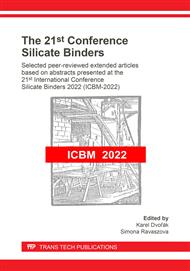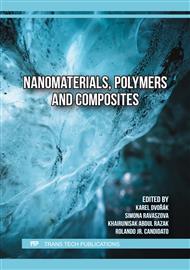[1]
A.A. Griffith, The phenomena of rupture and flow in solids, Philos. Trans. R. Soc. London, Ser. A 221 (1921), 163–198.
Google Scholar
[2]
G. Irwin, Analysis of stresses and strains near the end of a crack traversing a plate, J. Appl. Mech. 24 (1957), 361–364.
DOI: 10.1115/1.4011547
Google Scholar
[3]
D.S. Dugdale, Yielding of steel sheets containing slits. J. Mech. Phys. Solids 8 (1960),100–104.
DOI: 10.1016/0022-5096(60)90013-2
Google Scholar
[4]
G.I. Barenblatt, The mathematical theory of equilibrium cracks in brittle fracture, Adv. Appl. Mech. 7 (1962), 55–129.
Google Scholar
[5]
Z.P. Bažant, J. Planas, Fracture and Size Effect in Concrete and Other Quasibrittle Materials, CRC Press, Boca Raton (Florida, USA), 1997.
DOI: 10.1201/9780203756799
Google Scholar
[6]
M. Elices, G.V. Guinea, J. Gómez, J. Planas, The cohesive zone model: advantages, limitations and challenges, Eng. Fract. Mech. 69 (2002), 137-163.
DOI: 10.1016/s0013-7944(01)00083-2
Google Scholar
[7]
R. Borst, J. Remmers, A. Needlman, Mesh-independent numerical representations of cohesive-zone models, Eng. Fract. Mech. 73 (2006), 160–177.
DOI: 10.1016/j.engfracmech.2005.05.007
Google Scholar
[8]
J. Gałkiewicz, Application of cohesive model in fracture mechanics by Warp3D, J. of KONES Powertrain and Transport 15 (2008), 69–77.
Google Scholar
[9]
K. Park, Cohesive zone models: a critical review of traction-separation relationships in concrete and other quasibrittle materials, Appl. Mech. Rev. 64 (2011), 060802/1–20.
Google Scholar
[10]
E. Lorentz, E., S. Cuvilliez, K. Kazymyrenko, Modelling large crack propagation: from gradient damage to cohesive zone models. Int. J. Fract. 178 (2012), 85–95.
DOI: 10.1007/s10704-012-9746-7
Google Scholar
[11]
M.G. Pike, C. Oskay, XFEM modelling of short microfiber reinforced composites with cohesive interfaces, Finite Elem. Anal. Des. 106 (2015), 16–31.
DOI: 10.1016/j.finel.2015.07.007
Google Scholar
[12]
V. Kozák, Z. Chlup, Crack growth modelling in the silicon nitride ceramics by application of the cohesive zone approach, Key Engineering Materials 592-593 (2013), 193–196.
DOI: 10.4028/www.scientific.net/kem.592-593.193
Google Scholar
[13]
Y. Wang, H. Waisman, From diffuse damage to sharp cohesive cracks: a coupled XFEM framework for failure analysis of quasi-brittle materials, Comput. Methods Appl. Mech. Eng. 299 (2016), 57–89.
DOI: 10.1016/j.cma.2015.10.019
Google Scholar
[14]
J. Vala, V. Kozák, Non-local damage modelling of quasi-brittle composites. Applications ofMathematics 66 (2021), 815–836.
DOI: 10.21136/am.2021.0281-20
Google Scholar
[15]
G. Li, K.H. Tan, T.Ch. Fung, Q.J. Ju, M. May, A coupled cohesive-zone model for FRP-concrete mixed-mode separation, Compos. Struct. 268 (2021), 113872/1–14.
DOI: 10.1016/j.compstruct.2021.113872
Google Scholar
[16]
Y. Feng, J. Li, Phase-field cohesive fracture theory: a unified framework for dissipative systems based on variational inequality of virtual works, J. Mech. Phys. Solids 159 (2022), 104737/1–17.
DOI: 10.1016/j.jmps.2021.104737
Google Scholar
[17]
M.D. Thouless, S. Goutianos, Cohesive zone models and singularities at corners and cracks in homogeneous materials, J. Mech. Phys. Solids 171 (2023), 105159/1–16.
DOI: 10.1016/j.jmps.2022.105159
Google Scholar



